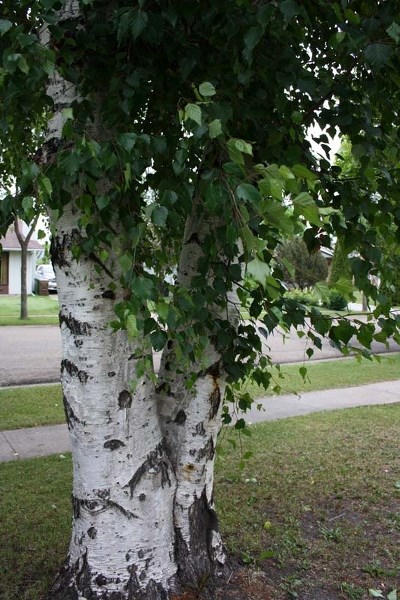You’ve got your lawn and garden looking great, but now have a gander at the trees in the front and back yard. Do you see dead foliage? Are the limbs or trunk cracked or missing bark? Or is it all just an unruly mess, with drooping, heavy branches calling out for some TLC?
Taking to your trees and shrubs willy-nilly with the hack saw or hedge clippers is a bad idea, according to tree experts, for when and where a tree is pruned can make the difference between a healthy, vigorous specimen, and a stunted, damaged tree.
According to the Edmonton-area company Alberta Arborists, proper pruning is essential in order to maintain the health, structural integrity and aesthetics of trees and shrubs – achieved by removing dead, dying, diseased and damaged limbs and increasing light and air penetration through selective thinning.
“Most homeowners don’t prune their trees at all, and it can become dangerous over time, with heavy splitting or falling branches,” said Mark Frederick, owner of All Season Tree Service. “The longer homeowners wait between prunings, the more aggressive we have to get with the tree, and that can impact its growth.”
Federick said costs for pruning range from about $100 to $500 per tree, but maintenance pruning every couple of years can be less costly and save on future problems. “Minor pruning is okay for a DIY project – kind of like getting a trim instead of the big haircut – but for specific concerns and big jobs, you’ll want a professional arborist to perform an inspection. The aim is to protect your trees, your home, your whole investment.”
For those who want to take on minor pruning jobs, experts say spring and fall are good times to do it, especially in spring before trees leaf out. “People get confused about when to prune, but anytime the tree is dormant, October to March, is okay. Optimum time is spring for most trees,” added Frederick.
For deciduous trees, prune January to April. Maples or birches are an exception and should be pruned in July. Pruning isn’t recommended at all for evergreens, though the least damaging time is May/June, say the experts. And for fruit trees, it’s recommended to prune when trees are dormant, between late fall and before the buds begin to swell in early spring. As well, a St. Albert bylaw only allows pruning of elm trees between October 1 and March 31, when elm bark beetles are inactive.
The city has an active program of tree maintenance – pruning and removing diseased or problem trees – that usually includes addressing young trees in public spaces and neighbourhood boulevards. From lifting low-hanging branches, to removing dead and diseased wood, to structural pruning – removing badly joined branches as needed – the city said pruning allows trees to develop a strong, healthy and tall form.
If you want to tackle the pruning project, sharp, clean tools are key. Jim Hole of Hole’s Greenhouses said he favours an aluminum bypass pruner and razor tooth pruning saw, calling them “essentials to get the cuts done safely and efficiently, and without causing harm to the plant or person doing the cutting.”
While pruning can invigorate trees, homeowners are advised not to prune more than one quarter of tree crown at a time – if a tree needs a lot of pruning, better to spread the job over several years.
“Make close, clean cuts. Prune moderately and regularly, and don’t remove a branch unless there’s a good reason to do so,” Frederick added.
Have a tree with multiple trunks? Examine where the trunks meet – a strong joint will look like a U, while a weaker connection is more of a V.<br />Never water your tree trunks, arborists advise: trees get their water from deep within the root system, provided by rain, not the garden hose. If you must, water halfway between trunk and the outer edge of the tree canopy.




